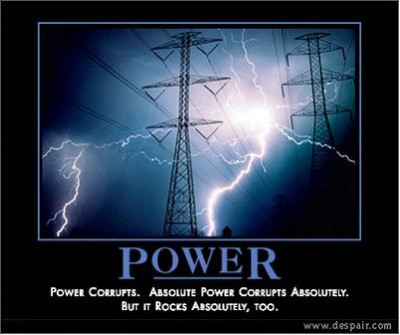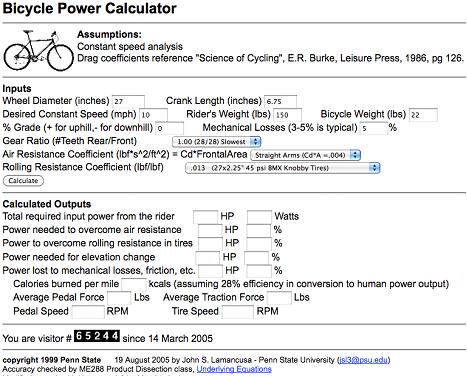 Watt Is Power? Or rather what is power?
Watt Is Power? Or rather what is power?
With a title like that, we could be here for days. Perhaps a better title would have been: What Is Power As It Relates To Cycling or even more to the point would be: Training on Indoor Cycling or Spinning® Bikes With Power. But as you see, that would have been quite a long and clunky title. So I spared you. Naturally, we will be confining our discussion to how the dynamics and science of Power has been applied to the sport of cycling. More specifically how it relates to the world of Indoor Cycling or Spinning® and the equipment used for this in most fitness facilities; stationary bikes. While most of our work was done on the Keiser M3 indoor bike, we are currently in the process of acquiring other power bikes for continued independent research.
Definition
Power is the product of strength and speed or put in terms of indoor cycling, the resistance applied to the fly wheel, and the RPM or cadence of pedaling. That seems pretty easy to understand right. The equation that comes to mind is:
Power = Resistance X Cadence
Oh if it were only this simple. Well, for the purposes of Indoor Cycling or Spinning®, this is all we need to know, and thuse, we have made it that simple. However, if you ride outside, you need to know that there are quite a few factors that also impact power as it relates to cycling. While we enjoy the perfection of a controlled environment for training, riding outside is anything but a perfect and consistent. Consequently, there are lots of factors that can affect one”™s power. A bunch of very smart people from Penn State put together a nifty Power Calculator for those of you who are even bigger data geeks than myself. You can find it at: http://www.me.psu.edu/lamancusa/ProdDiss/Bicycle/bikecalc1.htm
Here is a sneak peak at all the factors that go into calculating power when we move outside:
As you can see form the screen shot above, at least 65 thousand other people have a similar curiosity about power. You can also find a kazillion references to power as it relates to cycling on the internet, but our discussions will be squarely focused on how power is measured and used for Indoor Cycling or Spinning®.
This does not mean that the power generated indoors is not the same as the power generated outdoors. Essentially they are the same. It simply means there are different methods used to measure that power due to differences in equipment, environment and cost. Yes, there will be differences in the Watts you generate indoors, and what your power meter measures outdoors. Even cyclists who use the exact same bike, with the exact same power meters indoors and out will experience differences. Shocking as it may seem, the most expensive equipment available will still produce variations due to the enormous influence environment has on the rider and the equipment.
Nevertheless, this does not take away the value of training with power. Power meters still represents one of the best tools for improving your general fitness and/or performance on a bike that has hit the Indoor Cycling or Spinning® market in a very long time. The differences between indoors and out will not negate these positive effects. At the end of the day, it”™s the results we are looking for, and training with power will surely deliver!
Read more of Gino's Training with Power Articles - Here
- Me & My Big Mouth - April 18, 2024
- Indoor Cycling Power Research #7: Good News, Bad News - August 16, 2023
- Blog Post #10 Baseline& Performance Testing - June 29, 2023


We are doing a lot of “power” training and talking in our classes and everyone is really getting into it. Getting ready to get certified with Cyclops Power. I work at two gyms, one has Cyclops, and have taken the class to “test” with the power meter and then having discussions on power thresholds, heart rate and lactate thresholds and perceived extertions….it rocks, thanks for the info.
Really interesting, I really like it but again one thing will come over: cycling specificity.
I am 100% for it but it is easy to understand that using power have and will have a small part of IDC.
I once had one of my employees in my first technology company tell me that the internet was just a “fad” and that it wouldn’t last. Just because we don’t see it happening around us or we see others in our class who are disinterested, does not mean that it won’t become a big part of IDC. Only time will tell.
I’m still trying to get cadence computers in the gym and heart rate monitors on the students. Power seems a ways off, but I intend to learn all I can about it now so I am ready
Thank you!!!! This morning in class I told students I had a power meters installed on their bikes last night(some believed me!!!) I explained your formula above during warm up and urged them to increase WATTS during portions of songs that required more effort. It was a great way to help them visualize intensity. A cycling coach in class LOVED the concept, as his students all rely on power meters, and my IO’s (indoor onlies) seems to comprehend effort much better today! Question: What would you consider an appropriate RANGE of watts generated during an intense Spinning class? One guy guessed around 200 was realistic…your opinion? Thanks again!
Barbara, It’s so creative of you to “use” power when you don’t have any power indicators. Who said power training depends on the owners getting bikes with power right? I love it. Anyway, the problem with saying how many watts you should generate for an intense spinning class is almost the same as asking what heart rate should someone be at – each person comes with their own threshold HR and power, and although two people’s numbers can be vastly different, they may be working equally hard. The one thing we’ve learned though, is that 1 watt per pound is a real “gateway” to being able to climb almost any hill put before you. This helps it become more specific per person – so the 130 gal up front would want to generate 130 watts, while the 240lb guy in the back needs almost twice that. I’ll be going into that in more detail in a much later blog post.
Barb,
so creative! I’ve used that example in a different way, by suggesting that “IF they had a power meter on their bike, then they would see that at that high cadence and low resistance they weren’t doing much work…” but I like your version better! Tell them its actually there and it doesn’t lie so they better put some real resistance on (kind of like the Emperor’s New Clothes, everyone has to pretend along with me).
Gino, I like the 1 watt per pound example. You know I don’t like generalizations in IC, it gets us in trouble (as in your HR example), but this shows how we can personalize it, even a “guestimation” of it.
I have done a work in progress power chart….incorporating Borg 1-10, Cyclops Levels (1-5), Spinning Zones (Race, Endurance,etc) and Heart rate %, and it works well for a baseline guide and they all corelate well. Our goal in class, well is to have fun…and to be engaged..and to help riders understand that that there are ranges for all the disicplines, to assist them find what works for them. We are doing our second annual “Turkey Burn”, two hour ride, beer and donuts (kidding, but I do advertise that…and then have water and bars, gu and stuff), $20 donation, and we drop a charity name in a bucket, and pull out the name of said charity at the end of the ride, and send all $$$ to them. A blast. auugh, I need spell check..
I would be very interested in your thoughts on how watt training translates into training for outdor cycling…An MI in my area did an informal class for instructors and did not feel it changed the way he trained….I am thinking , just like avg MPH, i would be looking more to hit my mark???
I will be happy to see your blog as it unfolds around power and wattage!
Thanks
Very often I tell my riders to pretend there is a lightbulb on the handlebars. I tell them they need to generate enough power to light the bulb. Mid way though the song I ask them if their bulb is lit?! It’s a good visual and motivator.
Jody, If the MI you mentioned rides outside, my question would be how much climbing does he do. If not much, then I would ask if he races. If he doesn’t race, then I would ask him if he does rides longer than 60 miles or so. These are the prime types of outdoor riding where improved power will change your results and experience. If he says that he does not do any of the above, then he might not be interested in power training, unless he has hit a plateau in his fitness. Then it could help him break the log jam. It all comes down to what your objectives are.
Just got certified on the CycleOps bike. Seeing my power helped me smooth out my pedal strokes with a little more resistance. I will definitely try to bring the concept of power into my Spinning classes. Having HR, cadence, watts, and KJ’s on the console was enlightening and at the same time distracting at times. I covered mine and just enjoyed the ride at the end of the day. I met the sister of one of the astronauts doing all the spacewalking right now. Used this song this morning just for him…Space Walk by Lemon Jelly
I am a regular at spin classes at my local YMCA. We use Keiser bikes, and I love all the different information provided on the little computer on the bike. This has really helped me in my training. Dislayed are RPM’s, watts, calories, and a trip meter. There is also a heart rate readout if you are wearing a heart rate monitor.
This kind of equipment has really helped me get more specific with my training.